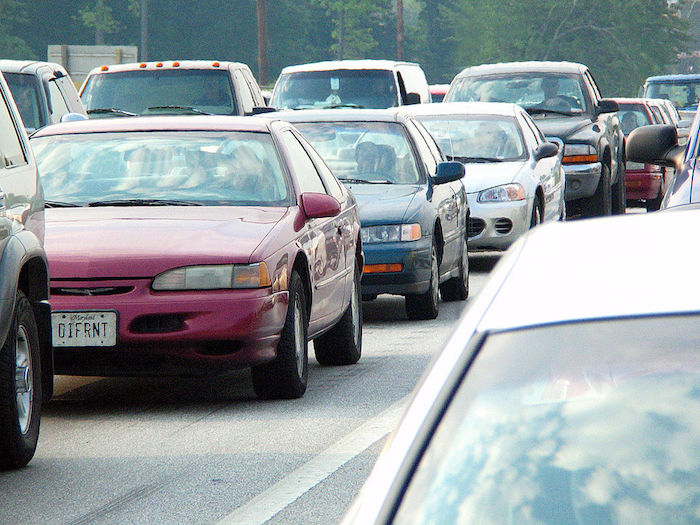
Source: U.S. Census Bureau, courtesy Wikipedia Commons.
The rippling waves of the Pacific Ocean beckon South Coast residents to the beach on these warm fall evenings, but there’s another ripple effect going on around town: the effect of the commuter on our community.
As rising real estate values send more and more people to live away from where they work, the hours they spend on the freeways are hours they’re not spending coaching Little League, leading Girl Scout troops and otherwise engaged with their communities.
Is there a ripple effect of commuting on community involvement?
“Absolutely,” said Gracie Huerta of the Santa Barbara Fire Department. “That comes up all the time. We get asked to do some sort of volunteer work, even the firefighters vs. police softball game, that kind of stuff doesn’t happen as much anymore because people have to go home.”
It’s tough to participate in activities after work, agreed most commuters.
“I usually get there late and hungry,” said Joel Russell, who for the past nine years has lived in Oxnard and worked for Hispanic Business Magazine in Goleta.
“That hour and 15 minutes (his average one-way commute) is crucial if you want to participate in things like the PTA or Boy Scouts or those kinds of activities,” said the father of two. “Even like city government-kind of things … you’re kind of behind the starting gate.”
J.R. Frazier, who has commuted from Oxnard to Raytheon in Goleta for the past four and a half years, wishes he had more time to spend at his 7-year-old son’s school.
While Russell and Frazier both said they feel like “Oxnard is home,” others feel their loyalties divided.
“I kind of feel like I don’t have a community,” said Dave Ward, a Santa Barbara firefighter who lives in Santa Maria.
Battalion Chief John Ahlman, who’s been with the Santa Barbara Fire Department for 31 years, lamented the loss of some extracurricular activities.
“I played softball for probably 15 years for the fire department, and pretty soon we just didn’t have the people locally. They’re not going to drive in from Timbuktu to do a ball game, so that all goes kind of by the wayside,” he said. “Aside from retirement barbecues and things like that, where you can spend the night, you don’t have the interest. It’s just different, which is sad.”
“I feel like sometimes I do have a split home,” said Ron Lafrican, a father of two who commutes to Santa Barbara Cottage Hospital from Ventura. “I’m involved in so many different things here (in Santa Barbara), I do the pancake flip for the Kiwanis Club … I sometimes wish I could put some more energy into what goes on Ventura.”
Lafrican said he is more fortunate than many commuters, in that he has a supportive employer that gives him the flexibility to be able to do the things he needs to with his children.
He’s also one of a growing number of people who take advantage of the vanpool program offered by Traffic Solutions. His core group of fellow riders has been together for almost a year, and includes employees from Cottage, the Cancer Center, the Rehabilitation Institute at Santa Barbara and Sansum Clinic.
“I would encourage anybody to try it for a month,” he said, “because the traffic isn’t getting any better.”
Both Lafrican and Russell, who drives alone, said they would happily take advantage of a light rail or fast bus option if one existed.
“Light rail would be wonderful,” agreed Frazier.
“I could be a lot more productive,” Russell said.
When Russell started commuting nine years ago he was the exception.
“Now it seems like quite a few others also commute and come from even farther away than I do … Thousand Oaks, Agoura Hills, Van Nuys,” he said.
There’s a lot more traffic, Russell said, “but despite all the drawbacks, it’s a beautiful drive. It’s got to be one of the most beautiful commutes on the planet.”
Frazier was less positive about the experience. “Commuting is commuting, whether you’re by an ocean or by a cement wall. It’s something I don’t want to do but its something I have to do.”
